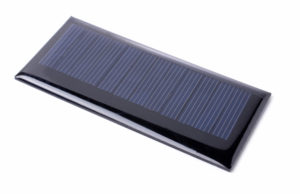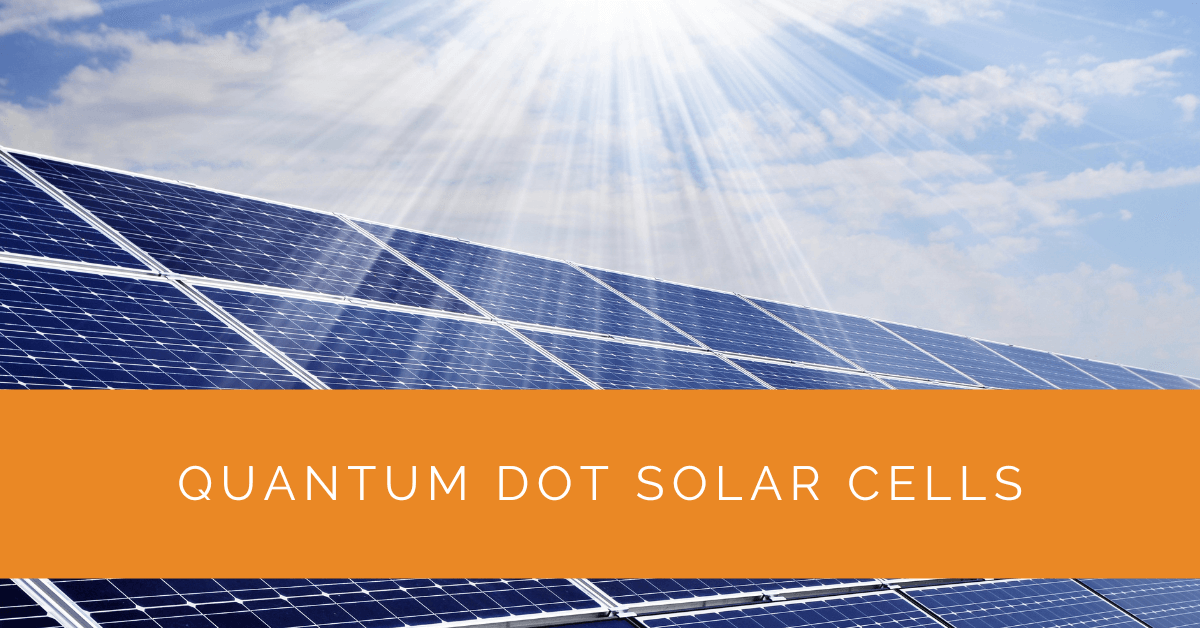In a world increasingly reliant on renewable energy, the quest for more efficient and eco-friendly solar cells has never been more critical. Quantum dot solar cells (QDSCs) represent a cutting-edge technology that can transform the solar energy landscape. This comprehensive guide will delve deep into the world of quantum dots, exploring their unique properties, synthesis methods, and pivotal role in the evolution of solar energy technology.
Contents
- 1 Key Takeaways
- 2 Understanding Quantum Dots
- 3 The Science Behind Quantum Dot Solar Cells
- 4 Synthesis of Quantum Dots for Solar Cells
- 5 Quantum Dots as Semiconductor Materials
- 6 Efficiency and Performance of Quantum Dot Solar Cells
- 7 Future Prospects and Challenges
- 8 Case Study: Implementing Quantum Dot Solar Cells for Enhanced Energy Efficiency
- 9 Expert Insights From Our Solar Panel Installers About Quantum Dot Solar Cells
- 10 Experience Solar Excellence with Us!
- 11 Conclusion
Key Takeaways
- Quantum dot solar cells (QDSCs) are a cutting-edge technology that leverages nanoscale semiconductor particles (quantum dots) to significantly enhance solar energy conversion efficiency by precisely tuning their absorption properties.
- The controlled synthesis of quantum dots, their versatile tunability, and their ability to match the solar spectrum through bandgap engineering make them promising contenders for sustainable energy generation.
- QDSCs offer numerous advantages, including higher efficiency, flexibility, and real-world applications, positioning them as a compelling option for revolutionizing solar energy technology.
Understanding Quantum Dots
What are Quantum Dots?
Quantum dots (QDs) are nanometer-sized semiconductor particles with remarkable optical and electronic properties due to their nanoscale dimensions. Unlike bulk materials, quantum dots display quantum confinement effects, meaning that their electronic behavior becomes highly tunable and precise. These extraordinary characteristics make them versatile and suitable for various applications, including photovoltaics.
Application of Quantum Dots
Quantum dots have entered various industries, from displays to biomedical imaging. However, their potential shines most brilliantly in solar cell technology. QDSCs, or Quantum Dot Solar Cells, are a class of photovoltaic devices that leverage the unique properties of quantum dots to enhance their energy conversion efficiency significantly. Using quantum dots as light absorbers, QDSCs can capture and convert a broader range of light wavelengths, a feature critical for maximizing solar energy utilization.
The Science Behind Quantum Dot Solar Cells
How QDSCs Work
At the core of QDSCs lies the ingenious use of quantum dots as light-absorbing materials. Unlike traditional silicon solar cells that rely on bulk semiconductor materials, QDSCs employ nanoscale quantum dots to capture and convert photons into electricity. This approach offers several distinct advantages.
The quantum confinement effect in quantum dots allows precise tuning of their electronic structure, enabling absorption of a wide range of photon energies. This tunability ensures that a more significant portion of the solar spectrum is absorbed, leading to higher energy conversion efficiency.
Benefits of QDSCs
The adoption of quantum dots in solar cells offers numerous benefits:
- Tunable Absorption Spectra: Quantum dots can be engineered to have specific absorption spectra by adjusting their size and composition. This property allows for a tailored match with the solar spectrum, resulting in optimized light absorption.
- High Efficiency: QDSCs have the potential to achieve higher energy conversion efficiencies compared to conventional silicon solar cells. Their ability to harness a broader range of light wavelengths makes them particularly effective in low-light conditions.
- Lightweight and Flexible: Quantum dots are lightweight and can be integrated into flexible substrates, enabling innovative solar panel designs and applications in various settings.

Synthesis of Quantum Dots for Solar Cells
Methods of Synthesizing Quantum Dots
Precise control over the synthesis of quantum dots is a crucial aspect of their application in solar cells. Several methods are employed to produce quantum dots, including colloidal synthesis and chemical vapor deposition. The choice of method depends on the desired quantum dot properties and the specific requirements of photovoltaic applications.
Importance of Controlled Size and Composition
The size and composition of quantum dots are fundamental determinants of their optical and electronic properties. By carefully controlling these parameters during synthesis, researchers can tailor quantum dots to meet the exact specifications needed for optimal performance in solar cells.
Quantum Dots as Semiconductor Materials
Quantum Dots as Semiconductor Nanocrystals
Quantum dots, owing to their nanoscale dimensions, exhibit quantum confinement effects, resulting in discrete energy levels. This property enables them to function as highly efficient semiconductor materials, facilitating the generation and transport of charge carriers in solar cells.
Bandgap Engineering with Quantum Dots
One of the most significant advantages of quantum dots is their tunable bandgap. Researchers can precisely engineer the bandgap of quantum dots by altering their size and composition. This ability to customize the electronic properties of quantum dots allows for a near-perfect match between their absorption spectra and the solar spectrum, ultimately boosting energy conversion efficiency.
Efficiency and Performance of Quantum Dot Solar Cells
Factors Influencing Efficiency
Several factors play a pivotal role in determining the efficiency of QDSCs. These include:
- Quantum Dot Size: The size of the quantum dots directly impacts their energy levels and absorption characteristics. Researchers must carefully select the size of quantum dots to maximize energy conversion efficiency.
- Ligand Passivation: Ligands on the surface of quantum dots can influence their electronic properties. Proper ligand passivation ensures efficient charge transfer within the solar cell.
- Choice of Materials: The selection of materials for quantum dot synthesis is critical. Materials with suitable electronic properties and stability are chosen to create high-performance quantum dots.
Comparison with Traditional Silicon Solar Cells
When compared to conventional silicon solar cells, QDSCs exhibit several advantages. These include higher power conversion efficiency, particularly in low-light conditions, and increased versatility due to their lightweight and flexible nature. These attributes make QDSCs a compelling option for various photovoltaic applications.
Real-World Applications and Success Stories
Quantum dot solar cells are not confined to laboratories; they are making tangible contributions to the real world. From portable electronic devices powered by solar energy to building-integrated photovoltaics, QDSCs have demonstrated their versatility and potential for high efficiency. Researchers and industries increasingly recognize their promise and explore innovative ways to incorporate them into practical applications.

Future Prospects and Challenges
Commercialization and Mass Production
The commercialization of QDSCs is on the horizon. As research continues to advance synthesis techniques and optimize performance, the widespread adoption of quantum dot solar cells in the energy sector becomes increasingly likely. The promise of higher efficiency and more sustainable energy generation drives efforts toward mass production.
Environmental Considerations and Sustainability
Sustainability is a pivotal factor in the adoption of renewable energy technologies. Quantum dot solar cells have the potential to offer a more sustainable and environmentally friendly alternative to traditional solar cells. Their efficient energy conversion and tunable properties align with the goals of reducing environmental impact.
Ongoing Research and Areas for Improvement
Researchers worldwide are actively exploring ways to enhance the efficiency, stability, and scalability of QDSCs. Collaboration and investment in research and development are pivotal in realizing the full potential of quantum dot solar cells. The future holds exciting possibilities for improvements and breakthroughs in this dynamic field.
Case Study: Implementing Quantum Dot Solar Cells for Enhanced Energy Efficiency
Background
A commercial property owner approached us with a goal to reduce their carbon footprint and enhance energy efficiency by integrating the latest solar technology. Quantum dot solar cells (QDSCs) emerged as the ideal solution due to their high efficiency and adaptability.
Project Overview
The project aimed to design and install a cutting-edge solar energy system using QDSCs. Our objectives included optimizing energy conversion, maximizing the use of available roof space, and ensuring long-term sustainability.
Implementation
- System Design: We began by conducting a thorough site assessment to determine the optimal placement for the QDSCs. This involved analyzing the roof’s orientation, potential shading issues, and overall surface area.
- Synthesis of Quantum Dots: Collaborating with leading researchers, we synthesized quantum dots tailored to match the solar spectrum prevalent in the region. This customization ensured maximum absorption and energy conversion efficiency.
- Installation: The QDSCs were integrated into lightweight, flexible panels, making installation seamless. The panels were mounted using advanced tracking systems to maintain optimal angles relative to the sun throughout the day.
- Advanced Cooling Systems: To mitigate the effects of high temperatures on panel performance, we incorporated passive and active cooling systems. These technologies maintained optimal operating conditions, enhancing the efficiency and longevity of the solar panels.
- Monitoring and Data Analysis: We installed a comprehensive monitoring system to collect real-time data on the QDSCs’ performance. This system allowed us to analyze energy production patterns, identify potential issues, and make necessary adjustments to optimize performance.
Results
- Increased Efficiency: The QDSCs demonstrated significantly higher energy conversion efficiency compared to conventional silicon panels. The tunable absorption spectra enabled them to capture a broader range of sunlight, leading to increased energy output.
- Reduced Carbon Footprint: By harnessing the power of QDSCs, the commercial property achieved a substantial reduction in carbon emissions. This contributed to their sustainability goals and enhanced their reputation as an environmentally conscious business.
- Enhanced Energy Independence: The integration of battery storage systems allowed the property to store excess energy generated during peak sunlight hours. This ensured a reliable power supply, even during periods of low sunlight, and reduced dependence on the grid.
- Long-Term Sustainability: The advanced cooling systems and customized synthesis of quantum dots contributed to the long-term durability of the solar panels. The property owner could expect consistent performance and energy savings for years to come.
Summary
This case study highlights the transformative potential of quantum dot solar cells in enhancing energy efficiency and sustainability. By leveraging the unique properties of QDSCs, we successfully implemented a state-of-the-art solar energy system that delivered exceptional performance and environmental benefits. The project’s success underscores the importance of embracing innovative technologies to drive the future of renewable energy.
Expert Insights From Our Solar Panel Installers About Quantum Dot Solar Cells
Quantum dot solar cells are revolutionizing solar energy conversion. Their tunable absorption spectra enable them to capture a broader range of sunlight, significantly improving efficiency.
Chief Solar Technology Specialist
The ability to customize quantum dots for specific absorption properties makes them highly adaptable for various applications, from residential solar panels to portable electronic devices.
Senior Photovoltaic Engineer
Advancements in quantum dot synthesis and bandgap engineering are paving the way for more sustainable and efficient solar energy solutions. These innovations hold great promise for the future of renewable energy.
Solar Research and Development Manager
Experience Solar Excellence with Us!
Trust in Solar Panels Network USA, where our seasoned experts deliver top-quality solar solutions for homes and businesses nationwide. With a legacy of countless successful installations and a commitment to sustainable energy, we’re your reliable partner in the solar journey. Ready for a brighter, eco-friendly future? Call us now at (855) 427-0058 and harness the power of the sun!
Conclusion
Quantum dot solar cells represent a transformative leap in solar energy conversion technology. Their unique properties, including tunable absorption spectra and high efficiency, position them as promising contenders for sustainable energy sources. As experts in the field, we are enthusiastic about the potential of quantum dot solar cells to reshape our energy landscape positively.
Quantum dot solar cells are not merely theoretical concepts; they are tangible steps toward harnessing the full potential of renewable energy. As we delve deeper into the quantum dots world, we unlock new possibilities for more efficient and environmentally friendly photovoltaic cells. The future of solar energy conversion shines brighter than ever, thanks to the remarkable realm of quantum dot technology.
As technology advances and research progresses, the field of quantum dot solar cells will only become more exciting and promising. Stay tuned for the latest developments and breakthroughs in this fascinating journey towards a greener, more sustainable future.
We take a significant step towards a world powered by clean, renewable energy sources by embracing quantum dots and their transformative capabilities. Let’s continue to explore, innovate, and harness the power of quantum dots for a brighter and more sustainable tomorrow.
About the Author
Solar Panels Network USA stands at the forefront of solar energy solutions, driven by a team of seasoned solar engineers and energy consultants. With over decades of experience in delivering high-quality solar installations and maintenance, we are committed to promoting sustainable energy through customer-centric, tailored solutions. Our articles reflect this commitment, crafted collaboratively by experts to provide accurate, up-to-date insights into solar technology, ensuring our readers are well-informed and empowered in their solar energy decisions.

